Ditapis dengan
E-book Gaza on Screen
In early May 2021, demonstrations by Palestinians protesting planned evic-tions from the Sheikh Jarrah neighborhood of Jerusalem spread quickly to al-Aqsa Mosque and other parts of East Jerusalem where Israeli authorities had engaged in several provocative actions throughout the month of Rama-dan, including disabling the loudspeakers that broadcast the call to prayer, preventing worshippers fro…
- Edisi
- -
- ISBN/ISSN
- 9781478024576
- Deskripsi Fisik
- 297 hlm
- Judul Seri
- -
- No. Panggil
- 305.8 ABD g
E-book Conversations with Tim Ingold : Anthropology, education and life
Tim Ingold is one of the world’s leading anthropologists. Over the past five decades, he has not only advanced thinking and research within the discipline of anthropology but also made significant contributions to a wide range of debates in both the arts and human-ities and the natural sciences. Characterised by a series of highly original attempts t…
- Edisi
- -
- ISBN/ISSN
- 9781917341028
- Deskripsi Fisik
- 240 hlm
- Judul Seri
- -
- No. Panggil
- 305.8 ING c
E-book Maori Landownership and Land Management in New Zealand
Maori people make up about 15 per cent (or almost 565 500) of New Zealand’s population of close to 4.2 million (Statistics New Zealand 2007a, 2007b). In 2006, 87 per cent of the Maori population lived on the North Island, with a quarter living in the Auckland region. In the 1950s, nearly 70 per cent of Maori lived in rural areas but by 2006 almost 85 per cent lived in urban areas. The Maori…
- Edisi
- -
- ISBN/ISSN
- -
- Deskripsi Fisik
- 23 hlm
- Judul Seri
- -
- No. Panggil
- 305.8 KIN m
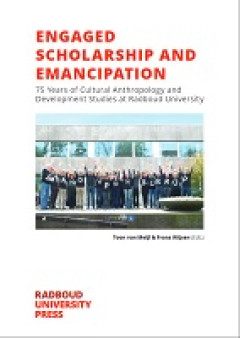
E-book Engaged Scholarship and Emancipation: 75 Years of Cultural Anthropolog…
This collective volume celebrates that 75 years ago the foundation was laid for the Department of Anthropology and Development Studies at Radboud University, Nijmegen, the Netherlands. The contributions to this volume exemplify the evolution of the academic disciplines of anthropology and development studies at Radboud University in the course of its history. Radboud University itself celebrate…
- Edisi
- -
- ISBN/ISSN
- 9789493296053
- Deskripsi Fisik
- 212
- Judul Seri
- -
- No. Panggil
- 301 MEI e
E-book British Activist Authors Addressing Children of Colour
‘Books are for white people.’ It’s an old idea, and historically, mostly a true one, at least in British publishing. Not only have most books, including children’s books, been written for and about white people in Britain, the scholarly and critical histories of literature, including children’s literature, have focused on these same books and their presumed-white audie…
- Edisi
- -
- ISBN/ISSN
- 9781350196049
- Deskripsi Fisik
- 215 hlm
- Judul Seri
- -
- No. Panggil
- 305.8 SAN b
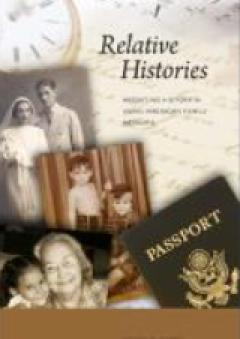
E-book Relative Histories : Mediating History in Asian American Family Memoirs
In general, I distinguish between four models of the kind of text gener-ally (in publishing and reviews) classified as “family memoirs”. As with all forms of literature, there are no definitive barriers between the forms I clas-sify as distinct. Part of my interest in contemporary auto/biographical writ-ing lies in how writers continually open up possibilities for self-representation throug…
- Edisi
- -
- ISBN/ISSN
- 9780824895358
- Deskripsi Fisik
- 201 hlm
- Judul Seri
- -
- No. Panggil
- 305.8 DAV r
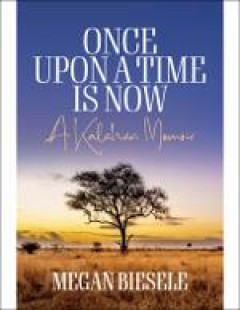
E-book Once Upon a Time is Now: A Kalahari Memoir
Fifty years after her first fieldwork with Ju/'hoan San hunter-gatherers, anthropologist Megan Biesele has written this exceptional memoir based on personal journals she wrote at the time. The treasure trove of vivid learning experiences and nightly ponderings she found has led to a memoir of rare value to anthropology students and academics as well as to general readers. Her experiences focus …
- Edisi
- -
- ISBN/ISSN
- 9781800738799
- Deskripsi Fisik
- 249 halaman
- Judul Seri
- -
- No. Panggil
- 928 MEG o

E-book Distributed Blackness: African American Cybercultures
Winner, 2021 Harry Shaw and Katrina Hazzard-Donald Award for Outstanding Work in African-American Popular Culture Studies, given by the Popular Culture Association Winner, 2021 Nancy Baym Annual Book Award, given by the Association of Internet Researchers An explanation of the digital practices of the black Internet From BlackPlanet to #BlackGirlMagic, Distributed Blackness places blackness at …
- Edisi
- -
- ISBN/ISSN
- 9781479811908
- Deskripsi Fisik
- 283 halaman
- Judul Seri
- -
- No. Panggil
- 305.8 BRO d 002811-eB-0122
E-book Design Ethnography : Epistemology and Methodology
Design is situated within a diverse field of disciplines that influence it (Götz 2010, p. 55 f.): Engineering, natural sciences, sociology, anthropology, psychology, economics—to name just a few. At the same time, design is not an academic discipline, even if there have been efforts to establish it as such (which incidentally has given rise to some heated debate). The thesis of this book is …
- Edisi
- -
- ISBN/ISSN
- 9783030603960
- Deskripsi Fisik
- 98 hlm
- Judul Seri
- -
- No. Panggil
- 305.8 MUL d
E-book Virtual Etnography
Chesterton in 1904 has a cautionary tale for those who wish to predict the future. The sheer abundance, diversity and originality of predictions in 1904 make it seem impossible for all of them to be wrong, but all of them do turn out to be wrong. The mistake which the futurologists had been making was that they took isolated events that were going on in their time, and extrapolated from there …
- Edisi
- -
- ISBN/ISSN
- 0761958967
- Deskripsi Fisik
- 188 hlm
- Judul Seri
- -
- No. Panggil
- 305.8 HIN v
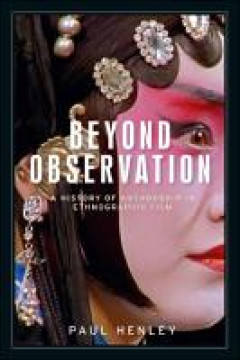
E-Book Beyond Observation: A History of Authorship in Ethnographic Film
This book analyses the authoring of ethnographic films between 1895 and 2015. It is based on the general argument that the ethnographicness of a film should not be gauged according to whether it is about an exotic culture, but rather by the degree to which it conforms to the norms of ethnographic practice more generally. On these grounds, it considers films made in a broad range of styles, on a…
- Edisi
- -
- ISBN/ISSN
- 9781526147295
- Deskripsi Fisik
- 563 halaman
- Judul Seri
- -
- No. Panggil
- 305.8 HEN b
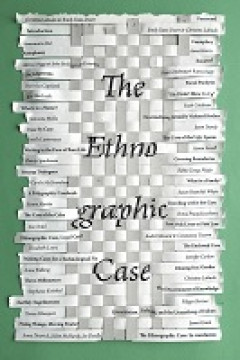
E-Book The Ethnographic Case: Second Edition
The 1st Edition of The Ethnographic Case, published in 2017, was an experiment in post-publication peer review, with the book published online and open to comments from readers. In this new 2nd edition, to be published later this year, the editors and authors have updated the text, both in response to these comments and taking into account changing contexts in the years since the book’s first…
- Edisi
- -
- ISBN/ISSN
- 9781912729340
- Deskripsi Fisik
- 258 halaman
- Judul Seri
- -
- No. Panggil
- 301 YAT t

E-Book Stories of Capitalism: Inside the Role of Financial Analysts
The financial crisis and the recession that followed caught many people off guard, including experts in the financial sector whose jobs involve predicting market fluctuations. Financial analysis offices in most international banks are supposed to forecast the rise or fall of stock prices, the success or failure of investment products, and even the growth or decline of entire national economies.…
- Edisi
- -
- ISBN/ISSN
- 9780226523569
- Deskripsi Fisik
- 224 halaman
- Judul Seri
- -
- No. Panggil
- 305.8 LEI s
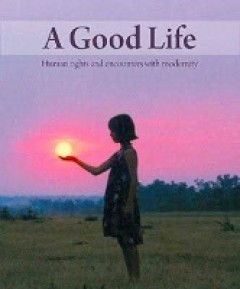
E-Book A Good Life: Human Rights and Encounters with Modernity
This book is a story. It’s a story about ordinary people in very different parts of the world dealing with rapid change in the late twentieth and early twenty-first
- Edisi
- -
- ISBN/ISSN
- 9781922144669
- Deskripsi Fisik
- 314 halaman
- Judul Seri
- -
- No. Panggil
- 909.82 EDM a

E-Book Inside Mining Capitalism: The Micropolitics of Work on the Congolese a…
- Edisi
- -
- ISBN/ISSN
- 9781800103184
- Deskripsi Fisik
- 186 halaman
- Judul Seri
- -
- No. Panggil
- 338.2 RUB i
- Edisi
- -
- ISBN/ISSN
- 9781800103184
- Deskripsi Fisik
- 186 halaman
- Judul Seri
- -
- No. Panggil
- 338.2 RUB i
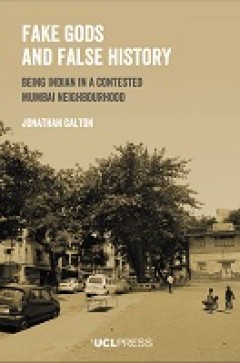
E-Book Fake Gods and False History: Being Indian in a Contested Mumbai Neighb…
n an age where history is a global battleground and fake news proliferates, culture wars are being waged across India over its future – majoritarian or inclusive, neoliberal or socialist, religious or secular? Fake Gods and False History takes us to the BDD Chawls, a central Mumbai neighbourhood of tenement blocks (chawls) on the brink of a controversial redevelopment. Throughout the book, …
- Edisi
- -
- ISBN/ISSN
- 9781800085800
- Deskripsi Fisik
- 237 halaman
- Judul Seri
- -
- No. Panggil
- 305.8 GAL f
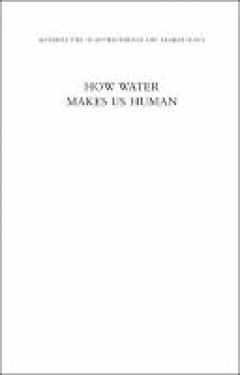
E-Book How Water Makes Us Human
This book is about how water becomes people – or, put another way, how people and water flow together and shape each other. While the focus of the book is on the relationships held between water and people, it also has a broader message about human relationships with the environment generally – a message that illustrates not only that people are existentially entangled with the material wor…
- Edisi
- -
- ISBN/ISSN
- 9781786834119
- Deskripsi Fisik
- 192 halaman
- Judul Seri
- -
- No. Panggil
- 301
E-book Diversity and Otherness : Transcultural Insights into Norms, Practices…
At the origin of the cooperation that eventually led to this book, there is the idea of emphasizing the gap between the ordinariness of diversity, as it occurs in everyday life, and the many ways of representing and addressing it as something exceptional, independently of whether those representations and practices carry with them posi-tive or negative connotations. On the on…
- Edisi
- -
- ISBN/ISSN
- 9788366675308
- Deskripsi Fisik
- 379 hlm
- Judul Seri
- -
- No. Panggil
- 305.8 GAU d
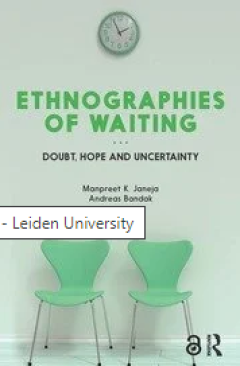
E-book Ethnographies of Waiting : Doubt, Hope and Uncertainty
- Edisi
- -
- ISBN/ISSN
- 9781000183764
- Deskripsi Fisik
- 212 hlm
- Judul Seri
- -
- No. Panggil
- 305.8 JAN e
- Edisi
- -
- ISBN/ISSN
- 9781000183764
- Deskripsi Fisik
- 212 hlm
- Judul Seri
- -
- No. Panggil
- 305.8 JAN e
 Karya Umum
Karya Umum  Filsafat
Filsafat  Agama
Agama  Ilmu-ilmu Sosial
Ilmu-ilmu Sosial  Bahasa
Bahasa  Ilmu-ilmu Murni
Ilmu-ilmu Murni  Ilmu-ilmu Terapan
Ilmu-ilmu Terapan  Kesenian, Hiburan, dan Olahraga
Kesenian, Hiburan, dan Olahraga  Kesusastraan
Kesusastraan  Geografi dan Sejarah
Geografi dan Sejarah